
The Canon SELPHY CP1500 is sold in black, white or baby pink options, each with a smart and stylish finish.
Measuring 182x133x58mm and weighing in at 850g, it's a little smaller and lighter than the preceding SELPHY CP1300 printer, for which it's a direct replacement. As such, it's a highly capable mobile photo printer that runs on dye-sublimation technology, so there's no messy ink to worry about. Instead, each specialist sheet of paper is fed through the printer four times, where cyan, magenta and yellow dyes are added successively, followed by a final protective, smudge and fingerprint resistant coating which should also ensure longevity of more than 100 years.
The SELPHY CP1500 features a 300x300dpi print resolution, which is typical of dye-sub printers. It might not sound much compared with inkjet printers but a crucial difference is that coloured dyes can be laid on top of each other, whereas droplets of different coloured ink from an inkjet printer need to be placed adjacently. The net result is that 300dpi is perfectly sufficient for high-resolution, dye-sub photo printing. As a mobile printer, it's an essential feature that the CP1500 is able to output photo prints without the need for it to be plugged into a computer or laptop. As such, it has a built-in LCD colour screen and a supporting cast of standalone control buttons. The whole interface is extensively redesigned compared to the preceding SELPHY CP1300.
The LCD screen is larger at 3.5-inch instead of 3.2-inch, and the design looks less cluttered with fewer buttons. Although larger, the screen is fixed and lacks the tilt function of the previous model, and it's still not a touchscreen.
Bu hikaye PhotoPlus : The Canon Magazine dergisinin February 2023 sayısından alınmıştır.
Start your 7-day Magzter GOLD free trial to access thousands of curated premium stories, and 9,000+ magazines and newspapers.
Already a subscriber ? Giriş Yap
Bu hikaye PhotoPlus : The Canon Magazine dergisinin February 2023 sayısından alınmıştır.
Start your 7-day Magzter GOLD free trial to access thousands of curated premium stories, and 9,000+ magazines and newspapers.
Already a subscriber? Giriş Yap
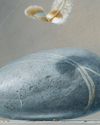
The Art of Copying Art - James Paterson shows you how to use your Canon gear to capture artwork and paintings the right way with simple camera and lighting skills
Whether you want to capture a painting like the above, digitise old prints or reproduce any kind of canvas, there's real skill in capturing artwork with your camera. Not only do you need the colours to be accurate, you also need to master the spread, angle and quality of the light to minimise glare and show the work at its best.This painting by the artist Bryan Hanlon has a wonderfully subtle colour palette. To reproduce the painting in print and digital form, it needs to be captured in the right way.

Fright night
Canon photographer and digital artist Alexander loves to craft incredible fantasy scenes with a spooky horror twist
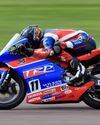
Sharpen your shots with DPP
Sharpening a digital image also increases contrast at the edge of details

CANON ImagePrograf PRO-1100
Deeper blacks, better bronzing, greater lifespan and 5G Wi-Fi -Canon's new printer is full of new tech, says
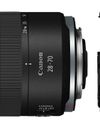
Canon's new 'kit lens' is actually a half-price f/2.8 trinity lens!
The Canon RF 28-70mm F2.8 IS STM lacks a red ring, but borrows premium features from its L-series siblings

DREW GIBSON
Pro motorsports photographer Drew on why he hasn't (yet) switched to Canon's mirrorless system, why old-school techniques can be the most reliable, and the lessons learned from more than a decade shooting the world's biggest car brands
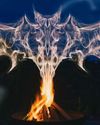
Up in smoke
Make a smoky shape in Affinity Photo and get to grips with the amazing Liquify Persona under the guidance of James Paterson

Expand your creativity with Generative Fill
Photoshop's Al-powered feature brings revolutionary new tools to image editing. James Paterson reveals all...
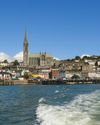
Turn your images into vintage postcards
Wish you were here? Sean McCormack explains how you can give your summer photographs a vintage postcard look
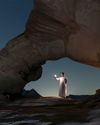
The Angel Malibu
Light painting an American movie producer in the Wadi Rum Desert in Jordan was a highly unlikely evening out for David!